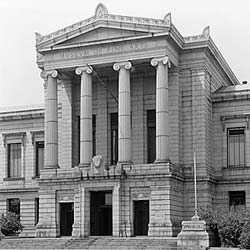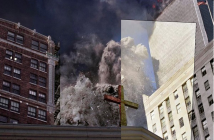To be a working and showing artist is a tricky endeavor. It requires a lot of attention to details, of both the creative and social varieties, and a minimum working knowledge of the systems that must all work together to bring an artist and their work to the public.
The vision (frequently perpetrated by Hollywood) of an artist working patiently in their studio until some influential force discovers them and takes them away to fame and fortune has always irked me. Such ‘discoveries’ may actually happen, although I doubt their frequency, and once that crucial gap has been bridged, once an artist enters the public sphere, they are but a small bit of flotsam in the ebb and flow of what is known as ‘the art scene’.
When my family or non-art-friends ask about how the art world works, I generally get nervous. It is very difficult to break down the layers into something coherent; to explain why certain types of work are acceptable for one venue and not another; why the location and motivation of a space can draw in a certain type of artist and audience while it drives others away; why my particular brand of conceptual work has no place on Newbury Street.
In the end, I usually wind up comparing it to the music industry: multimedia corporations vs. indie labels, stadiums vs. clubs, megastores vs. local shops, and so on. But that has never really satisfied me. So, using Boston and its surrounding towns as a model, I have attempted to isolate the systemic parts of the art scene. It is my hope that an artist reading Big RED & Shiny might locate points of entry into the system, or better ways of navigating; that the disparate venues can uncover new ways to bridge gaps; and that art lovers and collectors will be encouraged to look in unexpected places for great and inspiring new work.
STRATA: OVERVIEW
As stated before, there are many layers to this system, each with it’s own prevailing ideology. While it is true that individual institutions will vary in their applications and methods, it is fair to say that certain ideological themes link them categorically.
Below is a loose, and somewhat unrefined, breakdown of Boston’s venues and institutions. I have not included every single one of them, but chosen representative samples as illustrations.
STRATA 1: MUSEUMS
Museums are generally acknowledged to be ‘keepers of the culture,’ dedicated to preserving our history. This is a role the MFA, The Fogg and Isabella Stewart Gardner Museum fill with ease. Their collection galleries contain the remnants of the creative growth of many cultures, while the contemporary galleries bring in newer works in an effort to relate our current creative moment to the larger themes of history.
There are several museums whose ‘history’ is much shorter, though: The ICA, the DeCordova, and Mass MoCA are three examples. In these cases, they are museums in the sense that they attempt to present our current moment, then store and preserve that moment as a part of their collection of history. They become catalogues that grow through the passing of time, not through the collection of works from times past. It is an important distinction, but in both cases The MFA, Fogg and Gardner (catalogues looking backward) and the ICA, DeCordova and Mass MoCA (catalogues looking forward) serve the role of ‘keepers of the culture’ as preservationists, collectors, and (through forms of editing, curatorial practice and acquisition) authors of a cultural record.
STRATA 2: THE ACADEMY
Galleries that serve academic institutions are strangely schizophrenic. On one hand, they must present exhibitions by active contemporary artists that provoke thought and dialogue among the students while increasing the cache of the school publicly. They are marketing tools, both within academia and to the art-viewing public in general. But they must also serve as showcases of student work from within the school, thus relating the work of students (who may range from novice freshmen to experienced grad students) to the contemporary scene.
Many schools work hard, and often very effectively, to maintain this balance: MassArt, The Museum School, NESAD, Montserrat,AIB, BU… in Boston it is a very long list. There are some cases in which the ties to the school are less strong, though, and the galleries can foster identities of their own while still bringing attention to the academic institution that supports them. The PRC (at BU) and The List (at MIT) are both quite successful in this respect. Strangely, given that the underlying ideology of academic galleries is marketing (as well as education), and that they are supported by schools (who are becoming more competitive as businesses since the 1990s), these galleries tend not to function with any commercial intentions. In many cases, their curatorial policies resemble those of alternative spaces (see Strata 4 below) more than the museum or commercial systems that a first glance might imply.
STRATA 3: COMMERCE
Probably the easiest to define are the commercial galleries, as they are linked through the need to sell art to stay open. These are the front-line of the arts scene, where transactions between the arts system and the buying public occur, where trends are defined and shed, and the maintenance of any history is, in fact, a detriment. This is not to say that commercial galleries are mere retail outlets hawking wares. Often they are researchers as well, working closely with collectors to uncover the desires and trends of the marketplace. As galleries act on this information, the work on their walls signal to the artists looking to show their work what themes and trends are currently in vogue. Places like Bernard Toale, Howard Yezerski, Gallery Katz, Clifford-Smith, Locco Ritoro, Judi Rotenberg, Pepper Gallery, and many more, all fit this important role. They find trends, explore them, and feed that information back into the creative system.
Not all commercial spaces are content to follow trends, and will occasionally (or consistently) act as incubators. There are risks in this strategy, as experimental incubation is not generally the role of commercial spaces, but Samson Projects, Allston Skirt Gallery, andNAO Gallery have all shown that this risky strategy can also lead to success.
STRATA 4: ALTERNATIVES
At the core of most alternative spaces is a DIY determinism. Many of these spaces are founded on a desire to create and show work outside the limitations of a commercial market, made for a community that appreciates (but does not necessarily buy) artwork. In Boston, much of the energy for these spaces comes from the colleges - recent or current students looking for a voice in the daunting world described above. For better or worse, these are spaces with the most tumultuous existences. They are often non-profit, fed by youthful energy, and frequently housed in out-of-the-way or dangerous neighborhoods.
A comprehensive list of all the alt-spaces from the last 10 years would fill too many pages, but a short list of the currently energetic would include: Artists Foundation, Green Street Gallery, Zeitgeist Gallery, Gallery Artists Studio Projects (GASP), ArtSPACE@16, and Art Interactive. Each focuses on a specific slice of the alternative spectrum, working as incubators for artists to grow and engage the larger scene. Within the alt-scene, it is important to mention both The Berwick Research Institute and Mobius, who have lost their exhibition venues but continue to serve as facilitators and supporting agents. The Berwick offers a residency program, and both groups work closely with artists and other galleries to provide outlets for the work the foster. (Sadly, I wish I could include Oni Gallery in this section, but as of this writing they have yet to determine their new role.)
Of all the alt-spaces, the Boston Center for the Arts stands out for many reasons. The most obvious is it’s size. With the Mills Gallery, several theatres, studio spaces and the impressive Cyclorama, the BCA can act on many ideas and projects at once. Also, given its non-profit status and incubator mentality, the BCA serves as a larger and more stable site for artists looking to exhibit without commercial concerns. It is because of this stability that the BCA is often viewed as a ‘graduation’ from the smaller, more chaotic alt-spaces. With it’s museum-like presence but alt-space mentality, it serves as an important bridge for many artists.
Another form of alt-space has long existed in bars, coffee shops and restaurants. While often ignored for being outside the system, these outlets provide much-needed encouragement and focus for new artists. Add to that The Weekly Dig’s frequent reviews of ‘off the radar’ shows, along with Out Of The Blue Gallery’s collaborations with The Middle East and other spaces to put work in non-gallery contexts, and an argument could be made for taking these spaces more seriously.
STRATA 5: DIY
The most elusive of Boston’s scene are the DIY events and spaces. While many of these are often precursors of alt-spaces to come, these shows in apartments and basements and alleys bring out the true energy and idealism of the scene. There is very little record of these events, and many survive only as memories, but occasionally something like Charles Giuliano’s Maverick Arts, in his home in East Boston, or Zach Feuer’s “Apartment Show” in ’97, rise to public attention and reveal some truly alternative options.
CONNECTING
If you have read this far, you are probably wondering where I am going with this. Anyone with a few spare minutes could look at any scene and break it into loose categories like I have above. How is this useful? What can be accomplished? Certainly a little pink website can’t hope to alter a system as embedded as this?
The truth is that I have no desire to alter the system. It functions like most other social or economic system: tumultuous and chaotic at the bottom, stable and staid at the top, with circuitous paths of navigation between the strata. Anyone who has read Malcolm Gladwell’s bestseller “The Tipping Point” will already be familiar with the three types of people vital to creating social epidemics:Mavens, Connectors, and Salesmen. I think it is important to apply these ideas to an arts scene, to look at the rules of various types of institutions, and to study where they excel or come up short in their relationships to each other and to the larger system.
A Maven, according to Gladwell, is a collector and distiller of information. They use these vast amounts of accumulated data to find the best deals or services in the marketplace. For the arts, the Museums serve as Mavens. The accumulated histories in these institutions lend credence to, or a basis for dismissal of, new works and themes. They serve as our data reserve. Just as important are places like the ICA and Mass MoCA (but also the MFA, Gardner Museum and DeCordova) that constantly monitor new trends, cataloging contemporary themes from around the world, and folding them into their collected history. They bring the world-at-large into their salons and make it accessible locally.
The process of connecting, and those who serve as Connectors, are most commonly found in academia and alternative spaces. Yet while they both fill this necessary role, they do it in very different ways. Academia connects in two fundamental ways, and they are related to the schizophrenia I mentioned earlier. By bringing experienced artists to their galleries, they introduce students to a world beyond the walls of the school. Similarly, they introduce faculty and others to these artists and their ideas, effectively cross-pollinating regions and institutions with themes and trends.
The second form of connecting in academia comes from the dispersal of students into the world after graduation. These young artists, many of whom will engage with the art world on one or more of the layers I have mentioned, will take with them the themes, names and influences acquired in school.
Connecting is also done in the alt-spaces – often considered the fringe of the scene – but really the most flexible and versatile of any group. Some of this connecting is due to the fact that these spaces are often populated by recent graduates looking to join the larger system, but it is also due to the fact that, in their role as incubators, they can help artists rise to levels that are marketable for commercial galleries, academically challenging, or both. Alt-spaces allow artists to evolve, to grow and experiment. They show works no one else can, and allow commercial and academic curators to see projects that would be too risky for their venues. Tim Bailey of Oni Gallery once remarked: “I don’t think we ever said no. You want to paint the gallery in camouflage? Sure. You want to haul in hundreds of pounds of sand? OK. If we thought it was cool, we’d go out of our way to make it happen.”
Salesmen, of course, are those who convince others of value. Commercial galleries need, by their very nature, to take on this role. It is a necessary part of the process, because it takes artists and works out of the closed-circuit of academia and alt-spaces and presents them to the public. Some stick, others don’t, but in keeping up with the changing marketplace commercial galleries present a wide range of work to their audiences.
Interestingly, unlike other areas of capitalism, sales and profits are not the only measure of success, even for these Salesmen. Some works may not be collected, but academia may take them on. Others may serve to bolster a trend, or start a new one, without being big sellers themselves. The Salesmen of the art world are not selling used cars; they are acutely aware, and involved in, the larger systemic roles.
Another form of Salesmen come from a layer of the culture I have not mentioned yet: the critics. These institutions, ostensibly an extension of academic discourse, further the goals of bringing works to a general public beyond the arts system. Reviews of exhibitions make work accessible, translating and interpreting themes into a solid and compact idea, packaged with approval or dismissal. For many viewers, this form of pre-packaging allows them to approach the work with some sense of understanding, or at least a point-of-entry for reading the work.
The critical system could also be broken down into many strata (but that’s another article) but for Boston we can safely generalize three kinds: national/regional, neighborhood, and alternative. The Boston Globe, The Boston Herald and the Boston Phoenix all fit the first category; The South End News and Bay Windows the second; Big RED & Shiny, Some Other Magazine, Modern Kicks, Maverick Arts and The Weekly Dig the third. Each of these types of critical outlets bring their own voice and agenda to an exhibition or venue, but the cumulative result is a hybrid of academic discussion and marketing promotion. This is often a problem for critics, who can make or ruin shows with their words. It is doubly hard for alternative publications, who are often staffed by artists who want to write their opinions but also look to exhibit in the galleries they write about (Big RED is certainly no exception!).
SUMMARY
The roles of institutions in this system are often adopted out of necessity: alt-spaces become non-profit out of a lack of seed funding; commercial spaces are market-driven because sales keep the doors open; museums are endowed with specific mandates for collecting and storing works. The Gardner Museum is probably the most extreme example of the limitations of an endowment.
Overall, Boston’s system works pretty smoothly. However, there are always areas for improvement in any system. The gaps between commercial and alt-spaces could be closed to create a link in the marketplace between the ‘edgy’ experimental work and the trends of commerce. This would require time, and a conscientious effort by alt-spaces to encourage a consideration of the market by their artists. It would also require commercial spaces to foster new types of collectors – no easy feat, I will concede – who will take an interest in a new commercial sensibility.
Karine Jouenne, of NAO Gallery, recently wrote in Big RED: “Boston needs to move beyond… the small town committees and the thrift store art market mentality of school sales and benefit art auctions that undercut the emerging galleries trying to make a difference.” It will take efforts from both sides, but clearly the need and the opportunity are both present.
The Museums also have a role in this system, and recently the MFA has shown some grave disregard for one part of their role: presenting contemporary work in relation to their accumulated history. By focusing on simple sensationalism (Ralph Lauren’s cars, the annual rehashing of suburban favorites Monet and Picasso, or the widely hated Herb Ritts), The MFA has failed to relate the works in the contemporary galleries to the larger cultural history in any more than a superficial way. There have certainly been successes as well (Tim Noble & Sue Webster being one), but in it’s role as a cultural Maven, The MFA is starting to show it’s age.
The arts in and around Boston are amazingly diverse, energetic and provocative. The systems that support them are complicated and interwoven, yet navigating these strata is both vital and necessary for any artist looking to call this city home. Supporting these systems, in all their disparate glory, is what keeps Boston great and will push it into a brighter and stronger future.
----
- Rendering of the new Institute of Contemporary Art, currently under construction
- The Berwick Research Institute
- The Museum of Fine Arts, Boston






